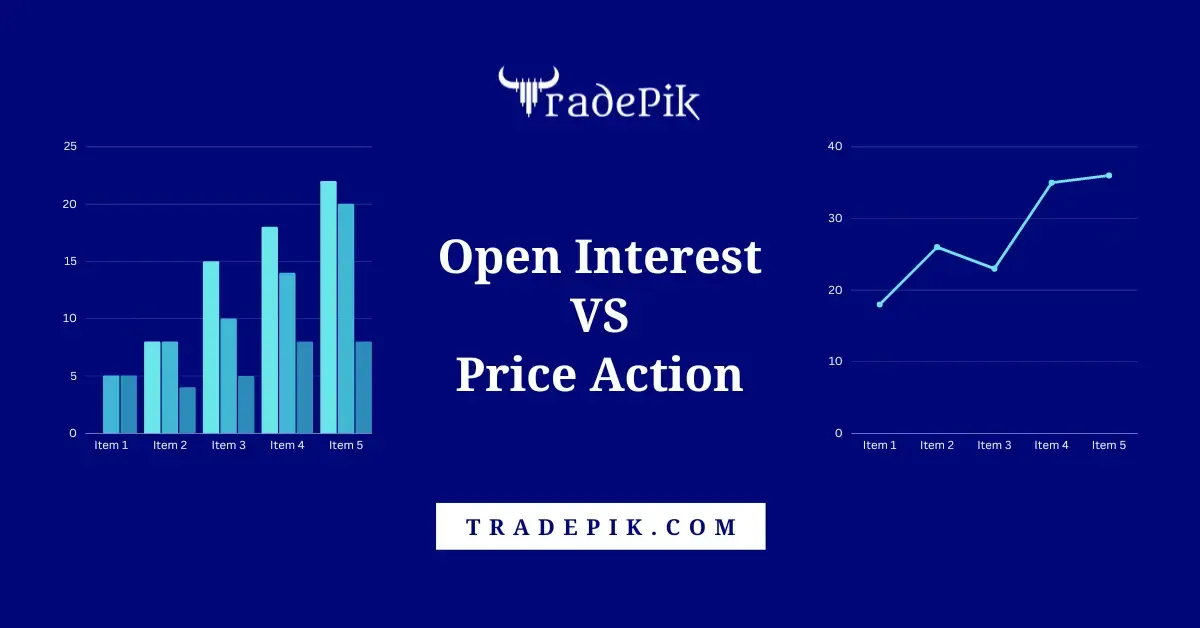Why Open Interest is Your Secret Weapon (And 3 Reasons Price Action Can’t Keep Up)
Open interest is a more reliable indicator of market sentiment than price action. Learn why open interest is more important for traders and how to use it to your advantage.

Hey traders! Ever felt like the market is one step ahead of you? You analyze price charts, spot patterns, and then — boom — a surprise reversal leaves you scratching your head. What if I told you there’s a hidden gem in trading metrics that’s often overlooked? Let’s talk about Open Interest (OI) — the unsung hero of market sentiment.
Price action gets all the glory, but here’s the truth: it’s like driving while only looking in the rearview mirror. OI, on the other hand, acts as your GPS for what’s coming next. Let’s dive into why OI deserves a front-row seat in your trading toolkit.
1. Open Interest is Your Crystal Ball (Sorry, Price Action)
Price action tells you where the market has been. OI? It hints at where it’s going. Think of OI as a live poll of trader convictions — it tracks the total open contracts in futures or options. When OI rises, new money is flooding in (bullish!). When it falls, traders are closing shop (bearish vibes).
Example Time: Imagine a stock’s been sliding for weeks. The chart looks like a rollercoaster, but OI is quietly climbing. That’s your clue: smart money might be positioning for a reversal. It’s like spotting quiet footsteps before the stampede.
2. OI Doesn’t Lie (But Price Action Can Trick You)
News flashes, hype, and even market manipulation can send prices on wild rides. But OI? It’s the calm in the storm. While a headline might trigger a panic sell-off, OI reveals whether traders are actually bailing or just shaking out weak hands.
Let’s Break It Down:
- Gap-Up Opening: A stock surges at open. Price action says “YAY!” But check OI:
- Long Buildup (new buy positions) = Bulls are here to stay.
- Short Buildup or Long Unwinding = Fakeout alert! Expect a dip.
OI cuts through the noise, showing you the real battle between bulls and bears.
3. OI Maps the Market’s Hidden Battle Lines (Support & Resistance)
Support and resistance levels aren’t just lines on a chart — they’re psychological battlegrounds. OI acts like an X-ray, exposing where big players are placing their bets.
How It Works: A pile of open contracts at a specific price? That’s your signal.
- Support Zone: Tons of open longs? Buyers will defend that level fiercely.
- Resistance Wall: Loads of open shorts? Sellers are ready to pounce.
Pro Tip: Pair OI with Volume and Price Charts. If OI spikes at a key level and volume surges, that’s your green light.
How to Use OI Like a Pro
- Spot Trends Early: Sudden OI jumps? A big move is brewing.
- Combine Tools: Mix OI with volume, moving averages, and RSI for a 360° view.
- Watch the Flips: OI dropping during a rally? The trend might be running out of gas.
Ready to Level Up?
If you’re new to OI, start small. Track one index or stock daily — notice how OI shifts with price. And if you’re hungry to master this, check out Option Strategies: A Mentorship Program. We break down OI, PCR, and advanced tactics through live sessions — no jargon, just actionable insights.
Final Thought: OI isn’t a magic button, but it’s the closest thing to reading the market’s playbook. Ditch the FOMO of chasing price moves. Instead, let open interest guide you to smarter, calmer trades.
Got questions? Fire away in the comments! Let’s decode the markets together. 🚀
Happy trading,
Sachin
P.S. Loved this? Share it with a fellow trader who’s stuck in the price-action maze. 👇💬




